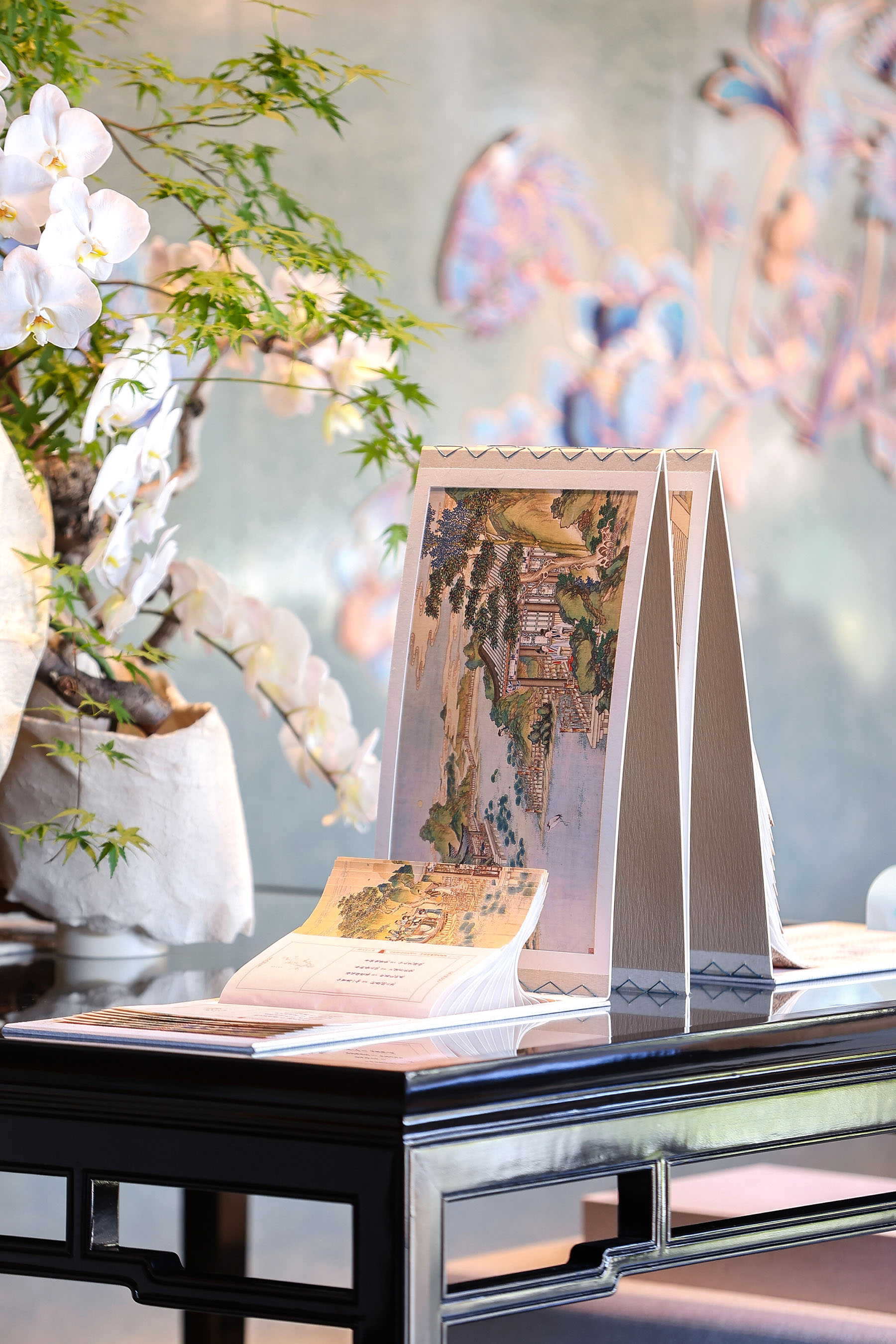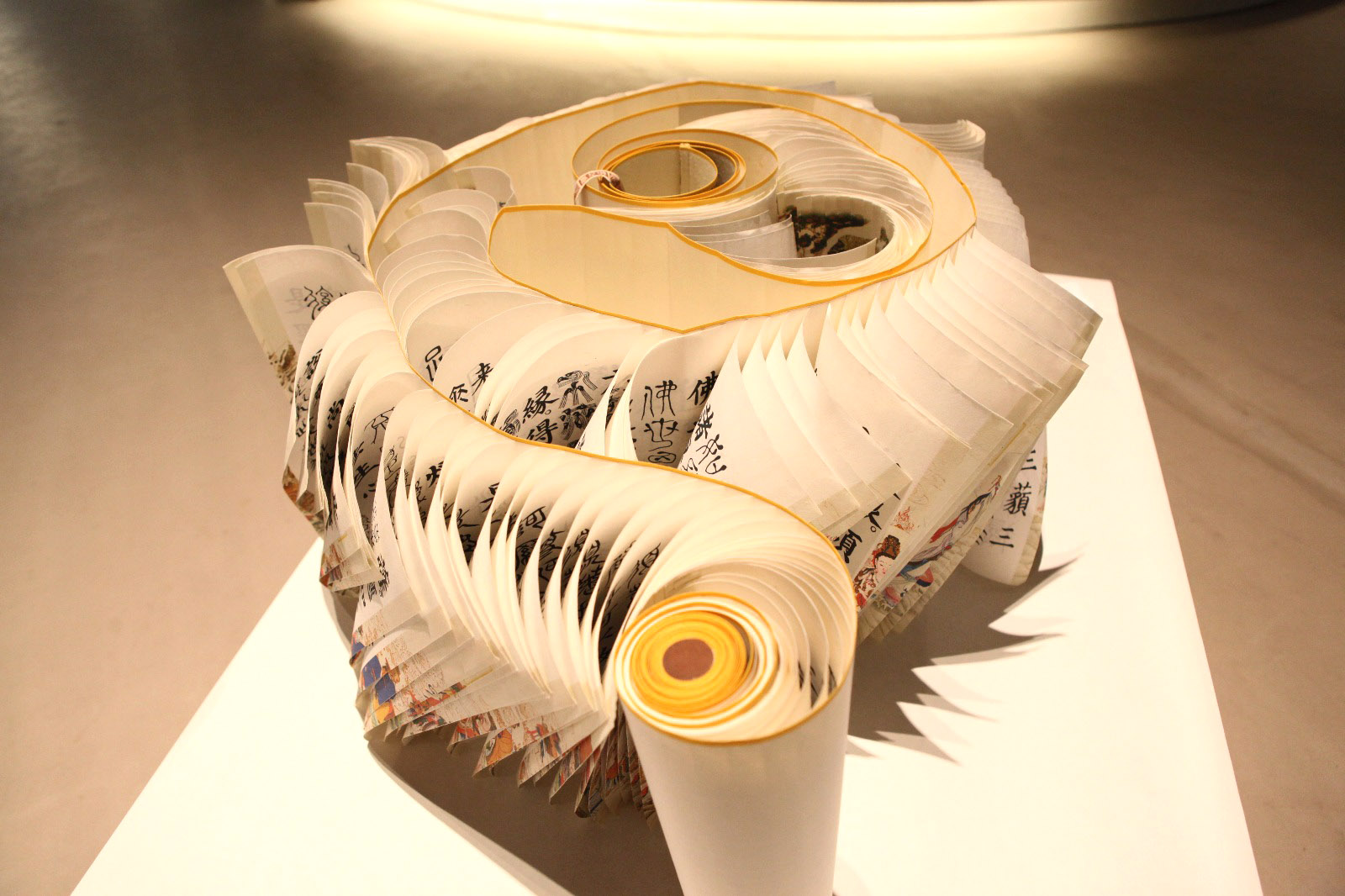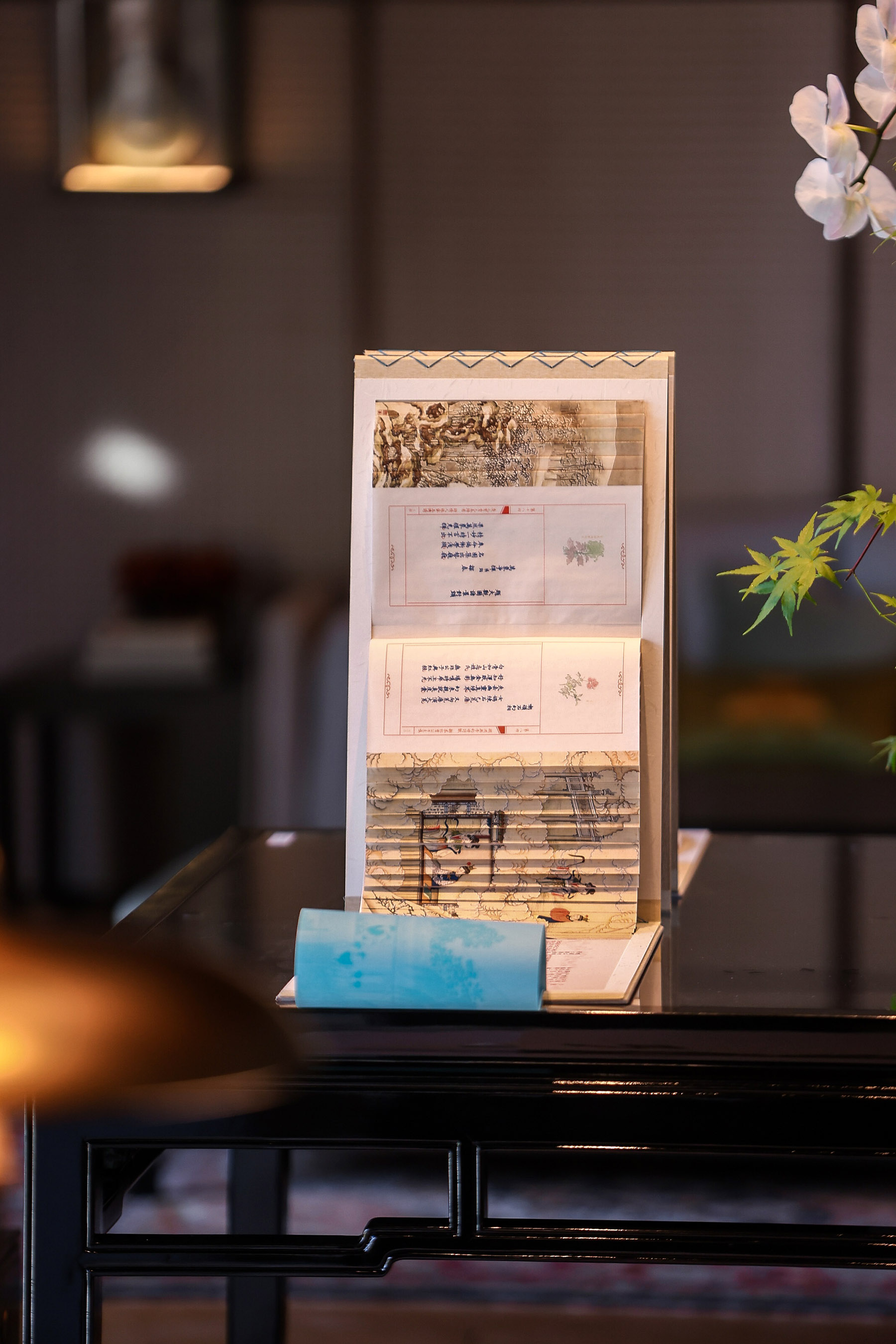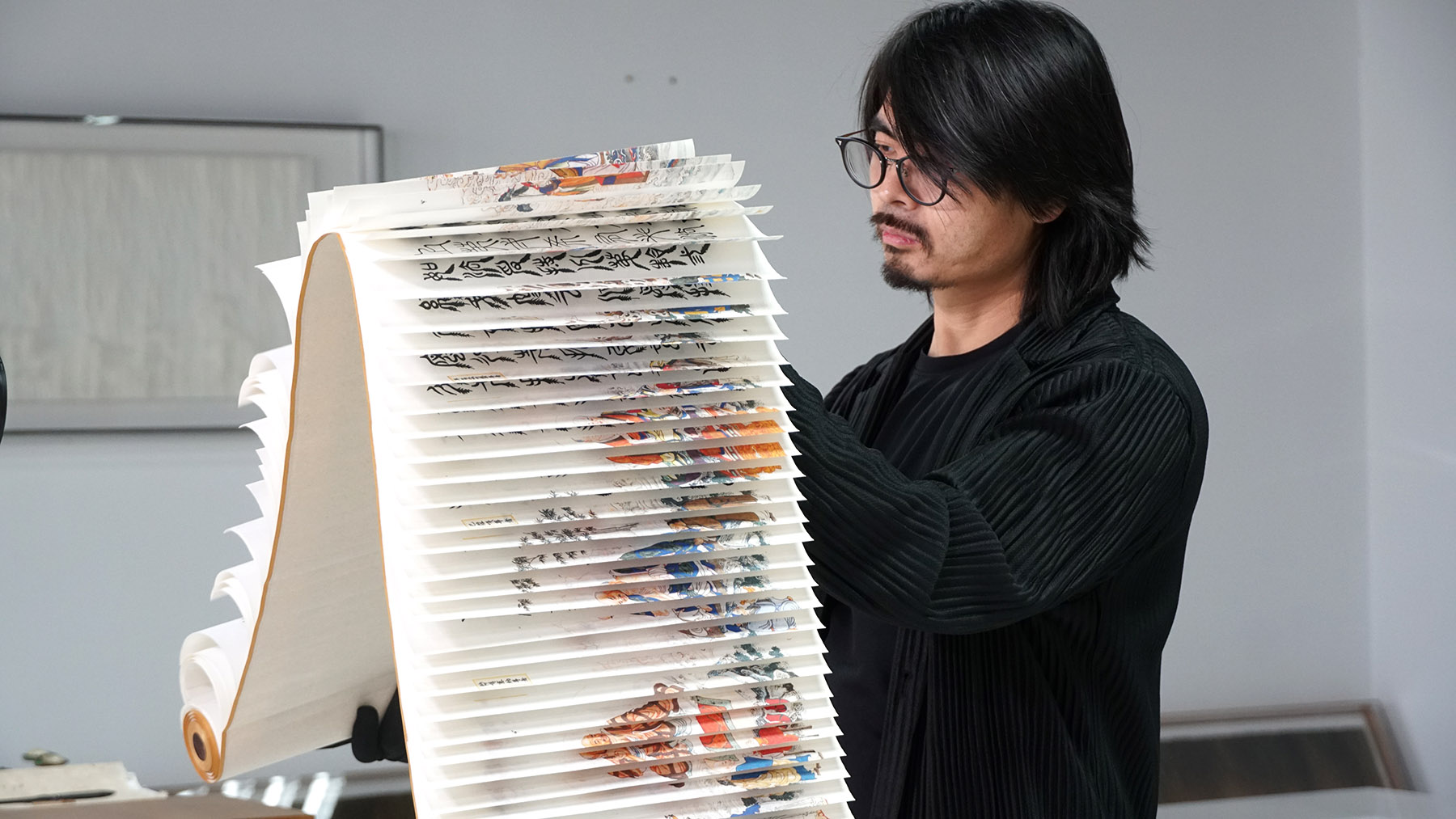Exhibition spotlights pieces that capture the essence of impermanence and peace, Li Yingxue reports.

Tucked away in a narrow hutong, or alleyways, in central Beijing, a wooden gate swings open to reveal an unexpected serenity. A spacious courtyard unfolds, anchored by two towering, lush trees. Along one side, a corridor lined with powerful artworks beckons.
Housed in the Mandarin Oriental Qianmen Hotel's quiet courtyard, The Hidden Essence of the Oriental exhibition runs until the end of May.
At the heart of the show are works by Beijing-based artist Zhang Xiaodong, whose delicate yet commanding pieces mirror the courtyard's tranquil atmosphere and the philosophical roots of Eastern thought.
"Who would expect to find such stillness in the middle of one of the world's busiest capitals?" Zhang reflects. "This place radiates an energy, as if time slows, or even bends. My work is shaped by that presence to channel today's emotional terrain while harmonizing with the surroundings."
READ MORE: Becoming the architect of one's own luminous legacy
Zhang's pieces are arranged like that in a slow meditation. The first, Vital Impulse, greets visitors with flowing lines that suggest trees and rippling water.
"Inspired by Taoist philosophy, it captures how all things — sorrow, joy, decay, renewal — move in endless cycles," the 44-year-old artist explains. "Eventually, everything returns to stillness. The idea of impermanence and peace moves me."
Vital Impulse is followed by a sequence of works, including early spring scenes and a dreamy blend of reds and pinks. Collectively, they reflect Zhang's first impressions of the courtyard and his broader meditations on time, places, and spirit.

Guan Hao, general manager of the hotel where the exhibition is held, describes the show as a deep exploration of Eastern culture's contemporary spiritual essence.
"It presents a powerful dialogue between tradition and modernity and what is hidden and revealed," Guan says. "It strikes a finely tuned balance between avant-garde creativity and local cultural grounding."
Zhang's work stands out for its visual impact and living, breathing quality.
"Zhang's pieces respond subtly to changes in humidity and temperature. They breathe with the space, constantly shifting in imperceptible ways," Guan explains. "At the same time, his art pays tribute to intangible cultural heritage, building the contemporary into a centuries-old craft."
According to Guan, Zhang's artworks evoke a poetic pursuit, a search for a personal Peach Blossom Spring, the mythical utopia of Chinese lore. "The hotel, tucked quietly within the Caochang community, mirrors that same spirit. It's a hidden urban sanctuary, tranquil and almost hermit-like."
Zhang made multiple visits to the site during the exhibition's planning, carefully studying the courtyard and its atmosphere to ensure his works would be in sync with the space.
"In the courtyard's calmness," Guan adds, "Zhang's work reinterprets classical traditions for a contemporary audience. His pieces are not just art, but translations, renewals, and meditations on how the past breathes into the present."

What sets Zhang's artwork apart is its thematic depth and technique. Each piece incorporates dragon-scale binding, or longlin zhuang, a bookbinding method that flourished during the Tang Dynasty (618-907), in which pages are layered like overlapping scales, allowing a book to unfold in an accordion-like manner.
Zhang spent years exploring and refining the technique, transforming it into his own artistic vocabulary.
In addition to his visual artworks, the exhibition showcases Zhang's books created using the ancient dragon-scale binding technique.
Among the highlights is his award-winning piece Diamond Sutra in 32 Zhuan (Seal) Fonts, which earned the Gold Prize at the China Print Awards. This monumental 8-meter-long scroll consists of 217 dragon-scale pages and, when fully extended, measures an impressive 73.4 meters in length.
When fully unfolded, the scroll resembles a vibrant, undulating dragon, with layered pages that flutter and ripple like scales in the wind. As viewers read from right to left, there is an alternating rhythm of elegant calligraphy and sweeping imagery, accompanied by the rice paper's soft texture and the faint scent of ink.
The result is a multisensory reading experience that engages sight, smell, and touch, offering a whole new way of appreciating a book.

Years of reading and bookmaking have shaped Zhang's reflections on the essence of books. "To me, a book is an architectural space where poetic language resides," he explains. "Like architecture, it has spatial structure and a layered layout. Words flow through it like people fulfilling different functions within a building.
"A book is also a time-traveling spacecraft to understanding the past, imagining the future, and transcending geographic and cultural boundaries," Zhang says. "It's a black hole of possibility, capable of containing all things known and unknown. The concept of a book is infinitely inclusive."
Always an avid reader, Zhang believes the best reading experiences imitate face-to-face conversations. "The idea is to preserve as much of the original text and imagery as possible," he says, "so that reading becomes an intimate dialogue with the author, as if we're sharing afternoon tea."
This belief drew him to learning dragon-scale binding, a technique that perfectly fuses text and imagery into a seamless, flowing narrative.
ALSO READ: Exhibition honors artist's illustrious career
Over the past decade, Zhang has created a handful of works using this method. His first dragon-scale book took two and a half years to complete; the second took four. For Zhang, each project must be unique in form and content. He refuses to repeat himself, no matter how time-consuming the process may be.
"I begin a new piece only if I've made some artistic progress. Otherwise, I'm just re-creating the past. That's a waste of time and energy."
Currently, he is working on a dragon-scale edition of Tao Te Ching, which has already taken six years. Zhang estimates it will take two more years to finish. "That may not even be my most time-consuming work," he notes. "The next one could take longer."
Contact the writer at liyingxue@chinadaily.com.cn


